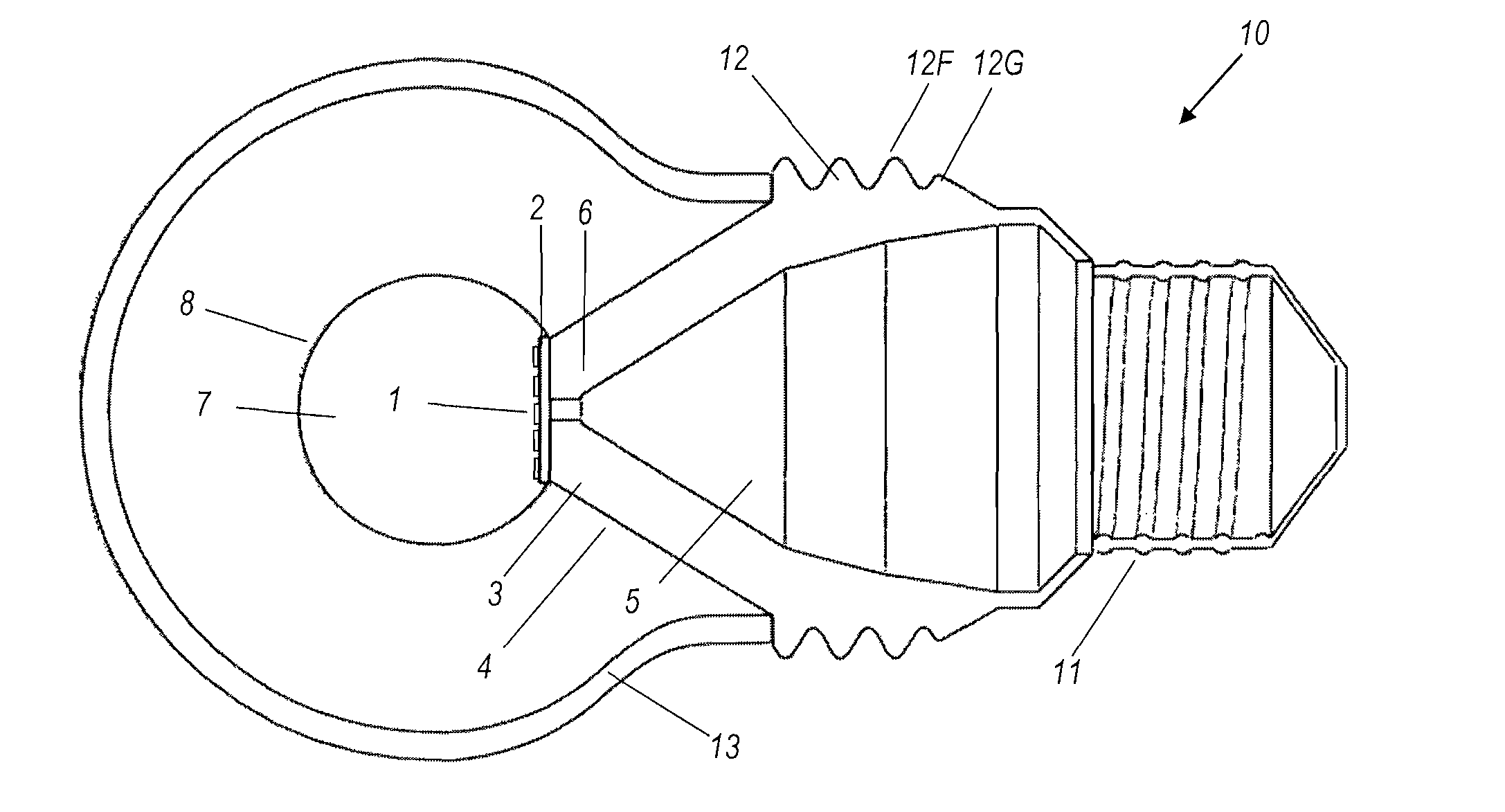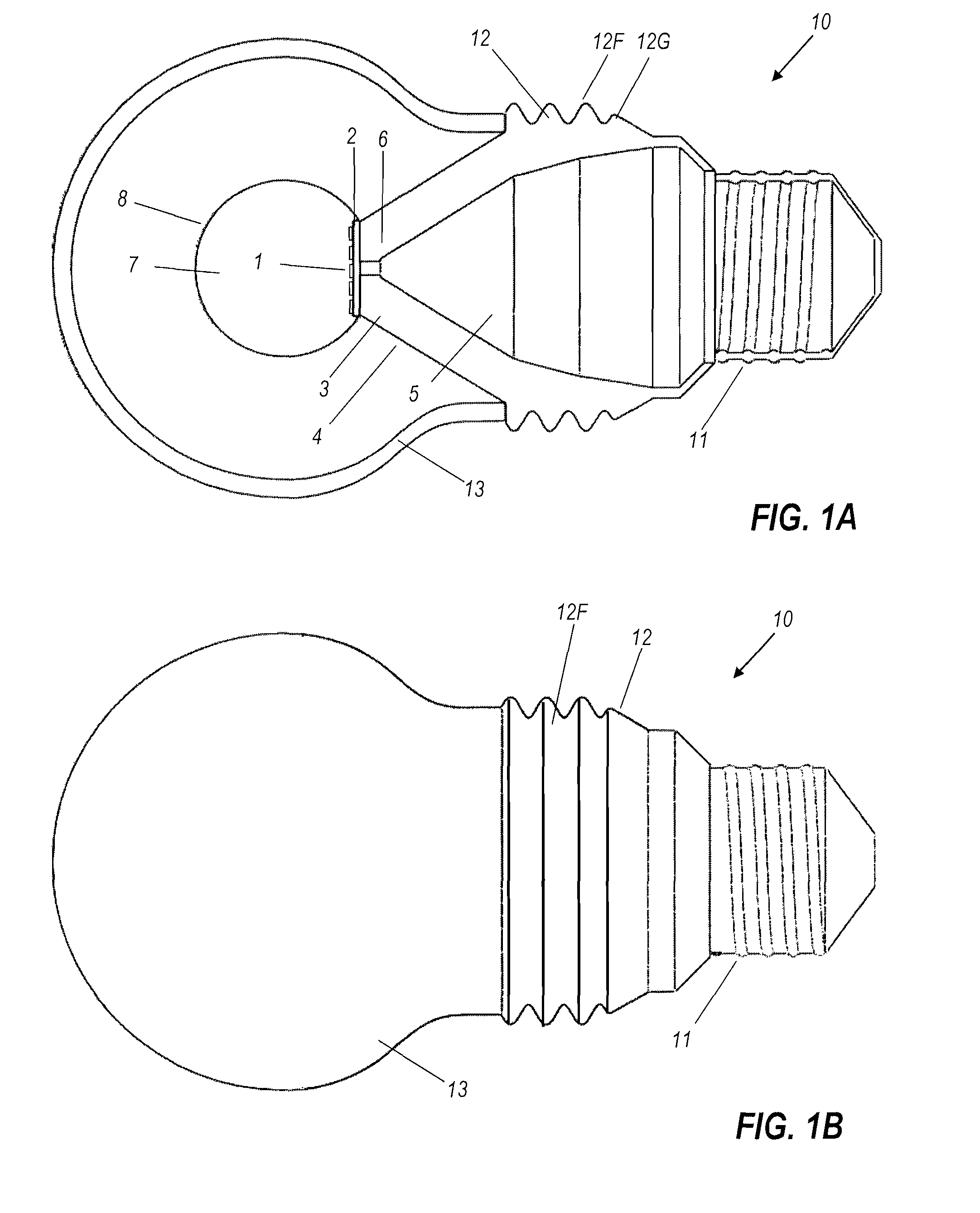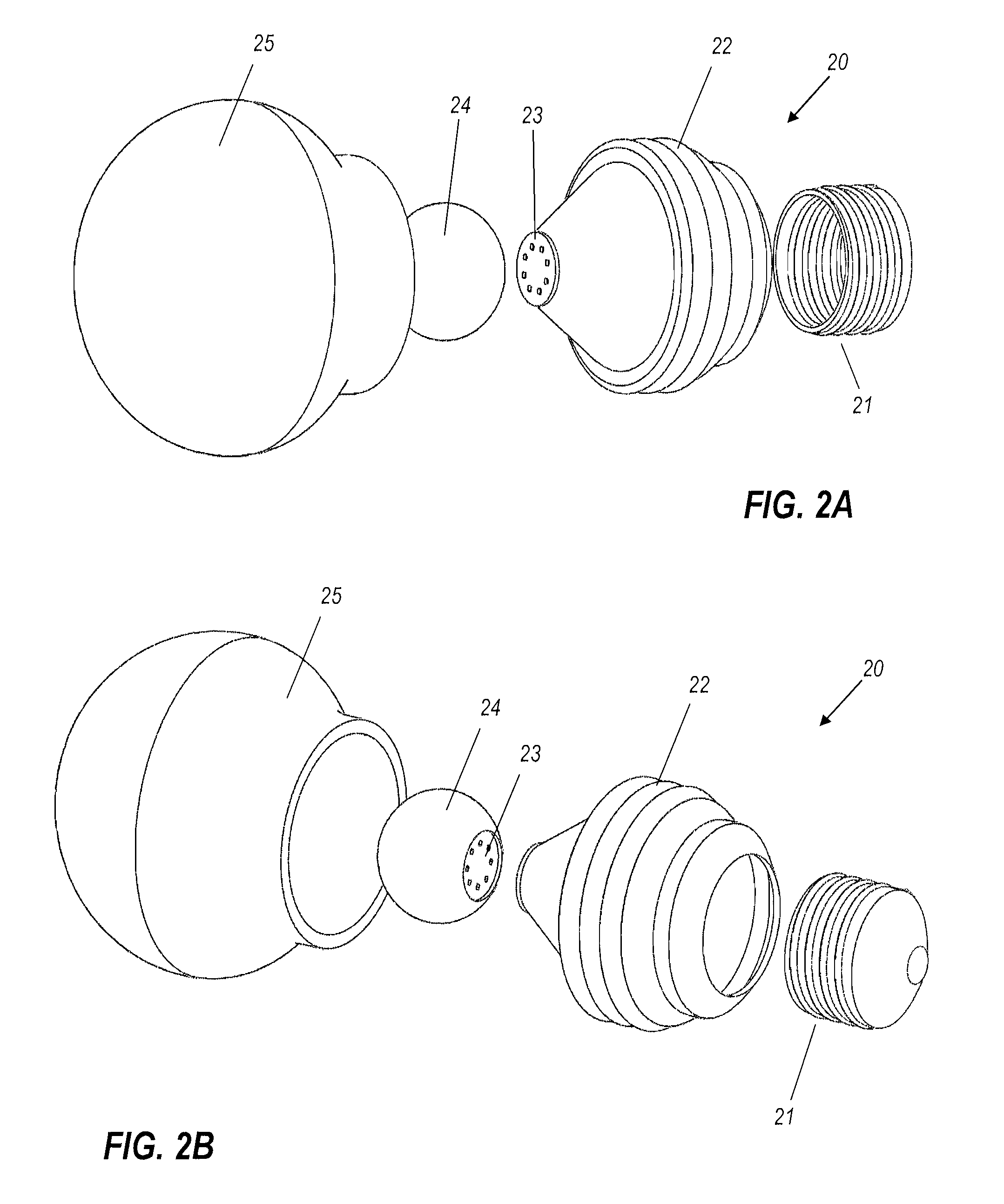Solid-state light bulb
a light bulb and solid-state technology, applied in the direction of spectral modifiers, gas-filled discharge tubes, lighting support devices, etc., can solve the problems of affecting the light intensity of the beam, etc., to achieve the effect of reducing the problem
- Summary
- Abstract
- Description
- Claims
- Application Information
AI Technical Summary
Benefits of technology
Problems solved by technology
Method used
Image
Examples
Embodiment Construction
[0045]A better understanding of various features and advantages of the present invention may be obtained by reference to the following detailed description and accompanying drawings, which set forth illustrative embodiments in which certain principles of the invention are utilized.
[0046]Referring to the drawings, and initially to FIGS. 1A and 1B (collectively FIG. 1), one embodiment of an LED light bulb 10 comprises an array 1 of blue LED chips mounted upon circuit board 2. Circuit board 2 is in turn mounted upon thermally conducting frame 3. The front part of conductive frame 3 is a cone frustum, with the circuit board 2 mounted on the flat top of the frustum. The conical exterior surface 4 of the conical part of conducting frame 3 is diffusely reflective (white). Frame 3 encloses an interior space 5 that contains power and control circuitry (not shown in detail) for the LED light engine (i.e., LED array 1 and circuit board 2). A transparent ball 7 is optically coupled to LED array...
PUM
 Login to View More
Login to View More Abstract
Description
Claims
Application Information
 Login to View More
Login to View More - R&D
- Intellectual Property
- Life Sciences
- Materials
- Tech Scout
- Unparalleled Data Quality
- Higher Quality Content
- 60% Fewer Hallucinations
Browse by: Latest US Patents, China's latest patents, Technical Efficacy Thesaurus, Application Domain, Technology Topic, Popular Technical Reports.
© 2025 PatSnap. All rights reserved.Legal|Privacy policy|Modern Slavery Act Transparency Statement|Sitemap|About US| Contact US: help@patsnap.com



